Understand the difference between Paleo vs Keto diets, their similarities, benefits, and drawbacks. Make an informed decision and choose the right diet for your health goals.
Are you caught in the Paleo vs Keto conundrum? Today, we delve into these nutritional titans, unraveling their mysteries for your ultimate dietary choice. Let’s explore the Paleo and Keto diets, their metabolic impacts, and how they stand out from diets like Whole30.
So, if you’re craving some healthy lifestyle tips while enjoying a good laugh (and maybe even learning a thing or two), hop on board this nutritional rollercoaster – your stomach will thank you later! Short answer: Paleo vs Keto is a battle of ancient nutrition philosophies that can help with fat loss. Please keep reading to unravel their delicious secrets!
* { box-sizing: border-box; } body { font-family: ‘Poppins’, sans-serif; background-color: #f1f1f1; margin: 0; padding: 0; } .quiz-container { max-width: 800px; margin: 30px auto; padding: 30px; background-color: #fff; border-radius: 5px; box-shadow: 0 2px 5px rgba(0, 0, 0, 0.1); } h1 { font-size: 30px; margin-bottom: 30px; } .question { margin-bottom: 20px; } .answer { display: block; margin-bottom: 5px; } label { cursor: pointer; } button { font-size: 16px; padding: 10px 20px; background-color: #007bff; color: #fff; border: none; border-radius: 5px; cursor: pointer; } button:hover { background-color: #0056b3; } #quiz-result { margin-top: 20px; display: none; } #quiz-result h2 { font-size: 24px; margin-bottom: 10px; } #quiz-result p { font-size: 16px; }Paleo vs. Keto Quiz
Keto
Paleo
Keto
Paleo
Keto
Paleo
Keto
Paleo
Keto
Paleo
Keto
Paleo
Keto flu
Paleo rash
Keto
Paleo
Keto
Paleo
Keto
Paleo
Your Score:
Paleo: ${paleoScore} / 6
Keto: ${ketoScore} / 4
${finalMessage}
- Healthline – Paleo Diet
- Mayo Clinic – Paleo Diet
- Healthline – Keto Diet
- Mayo Clinic – Keto Diet
What Is The Paleo Diet?
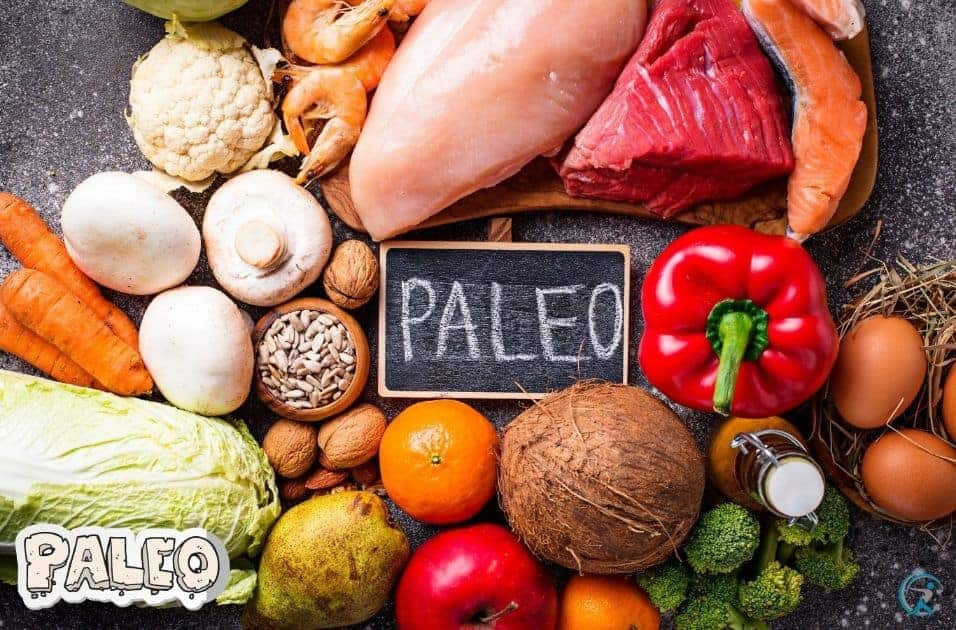
The Paleo diet, often dubbed the “Caveman Diet,” harks back to the Paleolithic era, focusing on foods that could be hunted or foraged. This diet excludes dairy, grains, legumes, and refined sugars, advocating for a lifestyle resembling our ancestors.
Paleo: A Prehistoric Feast for Modern Times
Imagine stepping back into the Paleolithic era. What would be on your plate? That’s the guiding principle behind the Paleo diet. It advocates for whole, unprocessed foods our hunter-gatherer ancestors likely consumed: grass-fed meats, fresh seafood, colorful veggies, nuts, and seeds. Grains, legumes, dairy, and processed sugars are banished, deemed incompatible with our primal physiology.
Check out: The Paleo Diet – A Risky Weight Loss Solution?
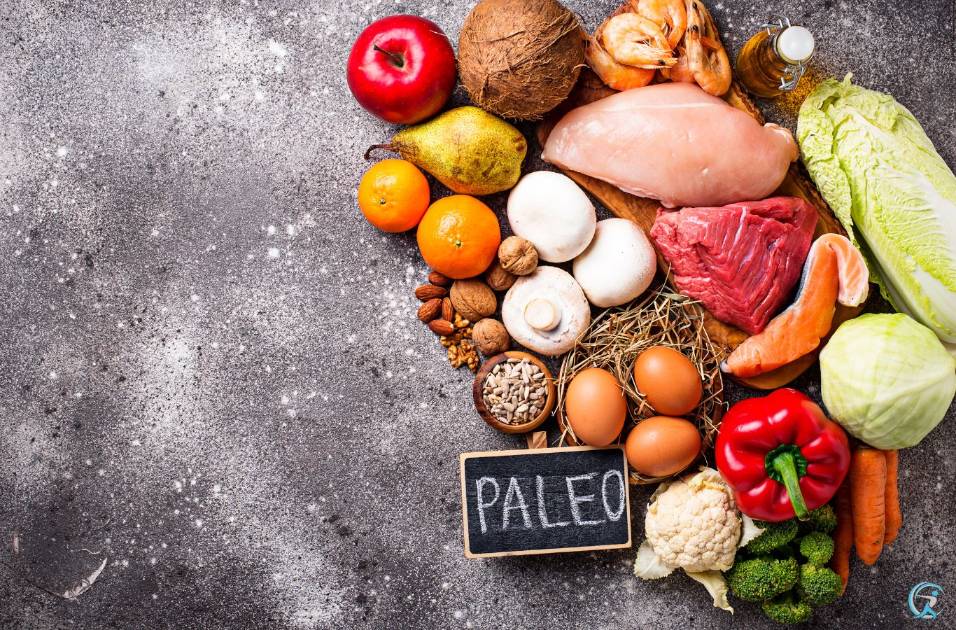
Benefits of the Paleo Diet
- Improved Blood Sugar Control: Ideal for those looking to manage diabetes.
- Heart Health: Linked to reduced risk of cardiovascular diseases.
- Weight Management: Aids in sustainable weight loss.
Downsides of the Paleo Diet
- Restrictive: Can be challenging to maintain long-term.
- Potential Nutrient Deficiencies: Due to the exclusion of certain food groups.
What is the Keto Diet?
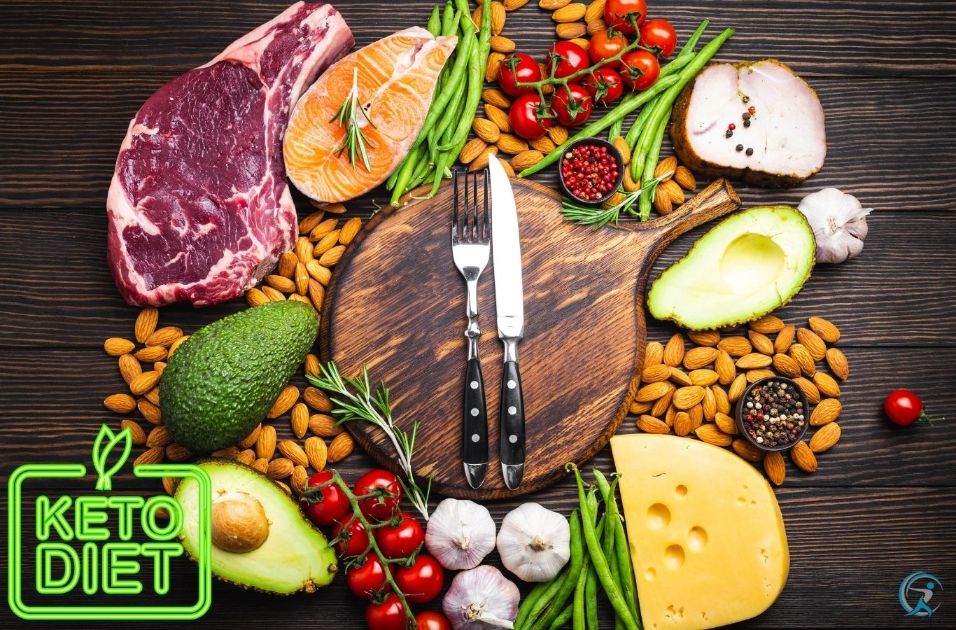
The Keto diet, a low-carb, high-fat diet, propels the body into a state of ketosis, burning fat for energy. Originally developed for epilepsy treatment, it’s now famed for its weight loss efficacy.
Keto: Flipping the Metabolic Switch
Whereas Paleo focuses on food types, Keto is all about carbs. This ultra-low-carb, high-fat diet aims to plunge your body into a metabolic state called ketosis. With carb intake slashed to 20-50 grams daily, your body starts burning fat for fuel instead of glucose, potentially leading to rapid weight loss and other health benefits. Think fatty fish, avocado, olive oil, and cheese, with a side of leafy greens – and say goodbye to bread, pasta, and most fruits.
Benefits of the Keto Diet
- Rapid Weight Loss: Efficiently sheds pounds.
- Blood Sugar Control: Beneficial for diabetes management.
- Mental Clarity: Many report improved focus and cognitive function.
Downsides of the Keto Diet
- Keto Flu: Short-term side effects during the initial phase.
- Restrictiveness: Limited food choices, making social dining challenging.
- Potential Long-Term Health Risks: If followed incorrectly.
Paleo vs Keto: The Face-Off
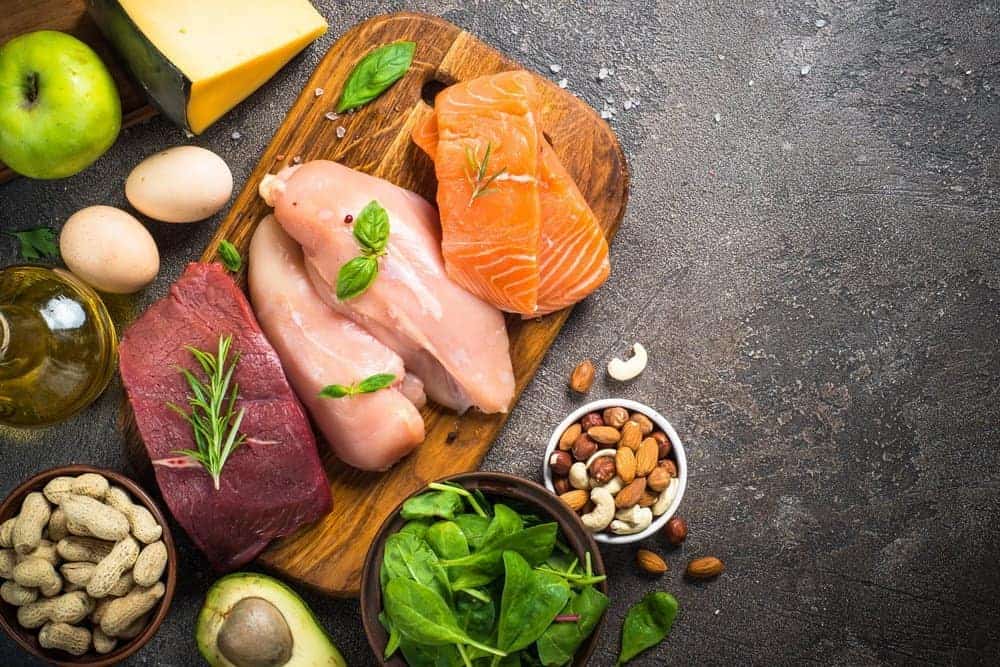
Head-to-Head: Unveiling the Similarities and Divergences
Both diets champion whole, unprocessed foods and encourage increased fruit and vegetable intake. They also share a rejection of sugary drinks, refined grains, and processed snacks. However, their core principles diverge sharply:
- Carbs: Paleo allows moderate carbs from fruits and veggies, while Keto strictly limits them.
- Fat: Keto embraces fat as its primary fuel source, while Paleo keeps it moderate alongside protein.
- Dairy: Keto permits full-fat dairy, while Paleo generally excludes it.
- Legumes: Paleo welcomes beans and lentils, while Keto frowns upon them due to their higher carbohydrate content.
Here’s a detailed comparison to help you decide:
| Aspect | Paleo Diet | Keto Diet |
|---|---|---|
| Primary Focus | Natural, unprocessed foods | High fat, low carb |
| Carb Intake | Moderate | Very low |
| Fat Intake | Moderate to high | Very high |
| Protein Intake | High | Moderate |
| Dairy | Excluded | Included (full-fat options) |
| Grains and Legumes | Excluded | Excluded |
| Added Sugars | Excluded | Excluded |
| Ketosis | Not a goal | Primary goal |
| Flexibility | More flexible | Less flexible |
| Suitability | Good for general health & wellness | Effective for quick weight loss |
Comparison of Paleo and Keto diets
The Paleo diet is more restrictive than the Keto diet. The Paleo diet requires you to eat only foods available to our ancestors during the Paleolithic era (which lasted from 2.6 million years ago to about 10,000 years ago). This means that most grains, legumes, and dairy products are off-limits on this plan.
The Keto diet is more flexible than the Paleo plan and allows for some carbs-but not too many! It’s based on the idea that eating lots of fat helps you burn fat instead of storing it as excess weight or body fat. So, if you’re looking for a way to shed pounds fast without going hungry all day, this might be right up your alley!
The Paleo Diet: Unleashing the Power of Ancestral Nutrition
If you’re grappling with the decision between the Paleo and Keto diets, it’s crucial to unravel their nuances to make an informed choice. The Paleo diet, drawing inspiration from our ancestors’ eating patterns, revolves around consuming whole, unprocessed foods while scrapping processed edibles, grains, and added sugars. By embracing this diet, individuals often witness enhanced blood sugar control and a reduced risk of cardiovascular disease. This dietary approach emphasizes food choices such as lean meats, healthy fats, and non-starchy vegetables while averting artificial sweeteners. Moreover, incorporating healthy fats like avocados and nuts into your plate’ll unlock a wealth of essential fatty acids that are pivotal for overall health benefits.
The Keto Diet: Unlocking Metabolic Efficiency for Unparalleled Well-being
Conversely, the Keto diet sets its sights on metabolic efficiency through a low-carb approach that significantly slashes carbohydrate intake. By pushing your body into a state of nutritional ketosis, this dietary regimen prompts fat burning for energy rather than relying on glucose derived from carbs. Drawing similarities to the Atkins diet—a renowned low-carb plan—the Keto diet urges individuals to minimize starchy vegetables and grain consumption while prioritizing healthy fats and lean meats. This strategic restriction of carbohydrates aids in stabilizing blood sugar levels—making it a boon for individuals grappling with diabetes or prediabetes.
Ultimately, both these diets champion healthier food choices by eliminating processed foods and added sugars from your daily fare. While the Paleo diet shines the spotlight on whole foods and leans towards lean meat consumption, the Keto diet spotlights healthy fats to fuel your energy production via nutritional ketosis. As you embark on this dietary journey to sculpt an optimal physique and nurture your well-being, remember to align your decision with personal goals while seeking guidance from healthcare professionals or registered dietitians for a seamless transition.
Similarities between the two diets
Although the Paleo and keto diets have many differences, they have much in common. Both of these diets are low in carbohydrates and high in protein, fat, and fiber. They also provide plenty of vitamins, minerals, and antioxidants to help you stay healthy.
Both diets try to get you to eat foods available 10,000 years ago. In other words, no processed foods or sugars!
Both emphasize whole foods
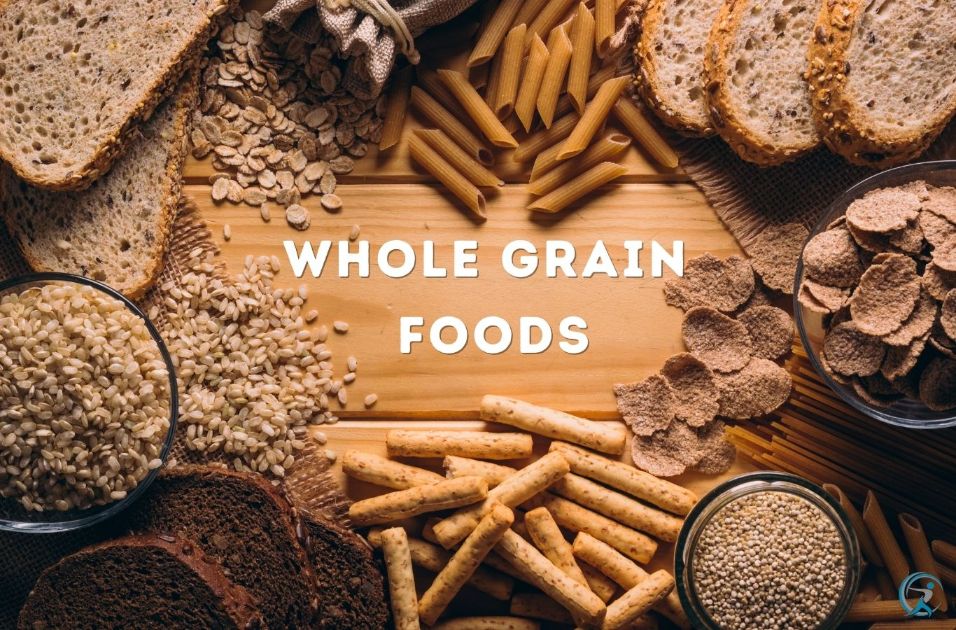
Paleo and Keto diets are similar because they emphasize healthy foods like fruits, veggies, meats, and fats. However, there are some differences between these two diets. For example, paleo diets do not allow processed foods, while keto diets do. Also, paleo diets focus more on protein intake than keto diets.
They must eat carbohydrates from vegetables (such as leafy green veggies) or fruit, which are low glycemic index foods.
This is especially evident with the inclusion of processed fats, oils, and sweeteners in the Paleo and Keto “rule books.
Both eliminate grains and legumes
Both paleo and keto dieters avoid grains and legumes. These two diets are similar in that they eliminate carbohydrates. However, Paleo dieters believe that humans didn’t eat grains or legumes until much later in history than keto dieters. Paleo dieters believe grains and legumes are unhealthy because they contain antinutrient compounds. Keto dieters believe that grains are harmful because they are high in carbs.
Grains and legumes are not allowed on the ketogenic diet. You should avoid eating these foods if you want to stay in ketosis.
Both eliminate added sugar
Keto and paleo diets are similar in many ways. Both emphasize eating natural foods and avoiding highly processed foods. But paleo dieters allow some refined sugar while ketogenic dieters do not.
Keto dieters primarily eat vegetables, fruits, nuts, seeds, meat, eggs, dairy products, and fish. They avoid carbs, grains, legumes, and processed foods.
Both emphasize healthy fats
Both diets encourage the intake of healthy fats. They both suggest moderate-to-liberal consumption of certain refined oils, such as avocado and olive oil. Both diets discourage highly processed fats, such as margarine and other commercial products.
Differences between the two diets
| Feature | Paleo Diet | Keto Diet |
| Definition | A diet based on the eating habits of early humans during the Paleolithic era. | It can be challenging to stick to, may lead to nutrient deficiencies, and may cause side effects like the “keto flu.” |
| Macro Nutrient Ratio | It can be challenging to stick to, may lead to nutrient deficiencies, and may cause side effects like the “keto flu.” | High fat (70-75%), moderate protein (20-25%), low carb (5-10%) |
| Food Sources | Meat, fish, eggs, vegetables, fruits, nuts, seeds, and healthy oils | Meat, fish, eggs, low-carb vegetables, cheese, butter, oils, nuts, and seeds |
| Prohibited Foods | Grains, legumes, processed foods, dairy, and added sugars | Grains, sugars, legumes, processed foods, and high-carb vegetables |
| Health Benefits | It can lead to rapid weight loss, improved blood sugar control, and decreased risk of heart disease. | Can be challenging to stick to, may lead to nutrient deficiencies, and may cause side effects like the “keto flu.” |
| Drawbacks | Can be difficult to stick to, may lead to nutrient deficiencies, and may cause side effects like the “keto flu.” | It can be expensive, challenging to follow, and require significant lifestyle changes. |
The Paleo diet is more flexible, allowing you to eat dairy and grains. The Keto diet is less flexible, restricting you from eating many foods.
In other words, the Paleo diet allows for more variety in your daily meals, while the Keto diet limits your choices. This makes it easier for people who want to stick with their chosen eating plan for an extended period.
Critical differences between Paleo Vs. Keto
Paleo diet:
- Promises better health
- Eliminating specific foods that were not available during hunter-gatherer times.
- Encourages exercising and being mindful.
- Allows for many whole-food sources of carbohydrates, as they fall into the permitted category.
- Emphasizes healthy fats.
- Grains and legumes are excluded from the Paleo diet because they weren’t part of early human diets, and they cause inflammation.
- Includes more vegetables than a ketogenic diet.
- Sugar sources like honey and maple syrups are allowed on the paleo diet.
- It tends to be higher in fiber, while ketogenic diets are lower in fiber.
- It is usually high in saturated fats, while ketogenic diets are low.
Ketogenic diet:
- Promises weight loss
- Fat is the cornerstone of the diet to stay in ketosis.
- Carbohydrates are restricted to limit blood glucose levels.
- Restricts carbs to a fixed amount.
- Encourage eating high-fat dairy products and some soy products, which fall within the acceptable carbohydrate range. (Soy products and dairy are a no-go on paleo, except for some grass-fed dairy and soy.)
- Sugar sources like honey and maple syrups are discouraged on the keto diet.
- It tends to be lower in fiber.
- It is usually low in saturated fats.
Pros and cons of each diet
- Paleo is a more flexible diet. You can eat whatever you want as long as it fits with the general guidelines of the plan.
- Keto is a more restrictive diet. You must follow specific restrictions to stay within your ketogenic macros (the amount of protein, carbs, and fat you should eat daily).
Choosing Your Culinary Cave: Which Diet Suits You Best?
The paleo diet provides a framework for healthy eating by emphasizing unprocessed foods and nutrient-rich vegetables. It may be easier to follow than Keto in the long term, as food restrictions are less stringent. However, Keto can be more effective for rapid weight loss and may offer specific health benefits, like improved blood sugar control, for certain individuals.
Ultimately, the “best” diet depends on your unique needs and preferences. Consult a healthcare professional to determine which approach aligns with your medical history and goals. Remember, consistency is key to success, so choose a diet you can maintain for the long haul.
Dive Deeper: Resources for Your Dietary Odyssey
- Paleo:
- The Paleo Diet by Loren Cordain
- Robb Wolf’s Paleo Solution
- The Daily Plate Paleo website
- Keto:
- The Ketogenic Diet by Lyle McDonald
- Mark Sisson’s Keto Adapted website
- Ruled Me website
Now that you’re knowledgeable embark on your dietary odyssey confidently! Whether you roam the fertile plains of Paleo or conquer the high-fat peaks of Keto, remember – the journey to a healthier you begins with one mindful bite.
Conclusion: Choosing Your Path
Both the Paleo and Keto diets have their merits and drawbacks. The best choice depends on your health goals, lifestyle, and dietary preferences. Consult with a healthcare professional before embarking on either journey.
Remember, the key to a successful diet is not just what you eat, but how you eat. Mindful eating, portion control, and a balanced approach are crucial in any dietary plan.
Disclaimer
This article is for informational purposes only and does not constitute medical advice. Always consult with a healthcare professional before starting any new diet.
References
Paleo vs. Keto: What’s the Difference? – Healthline
The keto and paleo diets share a lot of similar food restrictions and rules, though often for different reasons. Paleo focuses more on ideology while keto focuses on macronutrients One …
Paleo Diet vs. Keto Diet: What’s the Difference? | U.S. News
Although the keto diet can include some foods that are eliminated on the paleo diet, such as dairy and soy. As such, “the paleo diet is more likely to be …
Paleo vs Keto: The 4 Huge Differences You Should Know
While a Paleo diet is certainly lower in carbs than many other diets, it typically still has a higher carb intake than a ketogenic diet. Amount of Fat: …
Paleo vs Keto: What’s the Difference? | The Paleo Diet®
More importantly, the goal of each diet is different. The goal of keto is to eat less than 50 grams of carbohydrates daily to maintain a strict …
Paleo Vs Keto Diet: Top 6 Differences – Healthy Stripe
1) The Paleo diet is more sustainable than Keto. A keto diet plan forces a high-fat, low-carbohydrate diet with only around 20 to 50 grams of carbs daily. To …
Keto vs. paleo: What are the similarities and differences?
The keto diet does not allow honey, maple syrup, or other products that contain natural sugar or fructose. Paleo: Allows raw honey, maple syrup, date sugar, and coconut sugar. Keto: …
Paleo Vs. Keto – Differences; Pros & Cons; Which Is Best, Per Dieticians
The Pros and Cons of Paleo Unlike keto, Brooking gives a thumbs up to the back-to-basics approach in this plan. “The pros of paleo are that it focuses on increasing …
Paleo vs. Keto Diet: Which Diet Is Right for You? – Men’s Health
Is Paleo or Keto the better diet? BOTH KIZER and Yurechko agree that Paleo is the better option in terms of overall health, simply because it’s less restrictive and includes …
As a veteran fitness technology innovator and the founder of GearUpToFit.com, Alex Papaioannou stands at the intersection of health science and artificial intelligence. With over a decade of specialized experience in digital wellness solutions, he’s transforming how people approach their fitness journey through data-driven methodologies.